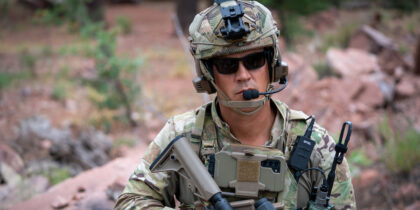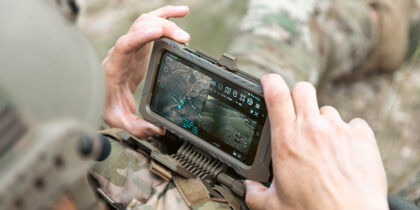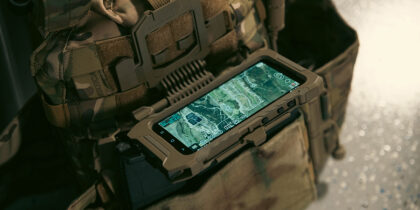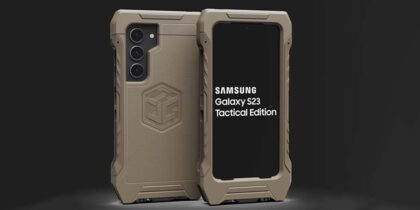Emerging technologies such as artificial intelligence (AI), machine learning, robotics, quantum computing and more are revolutionizing the battlefield and undeniably changing the nature of today’s conflicts. In response, the Department of Defense (DoD) is looking to connect advanced IT and automated systems to help the military better address pressing land, air, sea and cyber challenges, as well as leverage better data insights to confront threats like hybrid warfare in new ways.
The strategies driving how the U.S. Army will compete with, penetrate and exploit adversaries in this type of environment is still evolving — but rapidly advancing. Doctrines such as The U.S. Army in Multi-Domain Operations, 2028 lay the vision for the path forward, and documents such as the January 2019 GAO report, Steps Needed to Ensure Army Futures Command Fully Applies Leading Practices, provide a window into the progress being made in tackling the fundamentals needed to maintain a technological edge.
While the Army’s supporting 10-year strategy is set to come out later this year, some leaders have been hinting at how efforts underway will integrate with the anticipated data strategy and existing cloud computing efforts. What’s clear already, however, is that achieving 2028 goals will require both short- and long-term supporting modernization strategies.
Army commands need to fully understand the available tools, systems and resources; how they meet core operational needs and requirements; and ways they integrate with existing investments to meet IT transformation-related demands. Sharing insights with mission leaders on these issues and trends is the value of forums like the Association of the United States Army’s 2019 Annual Meeting, where public and private sector leaders can come together to collaborate and discuss the latest technology innovations that will drive greater mission success.
What the Future of Army Readiness Looks Like at AUSA 2019
At the event, Samsung will be showcasing a robust ecosystem of secure mobile platforms tailored to the needs of multidomain operations (MDO) in booth #4205. Attendees will have the opportunity to experience how solutions — including the Galaxy S10, Galaxy Note10, Galaxy S9 Tactical Edition, Galaxy Tab Active2 and Tab S4 TAA-compliant tablets, wearables, Samsung Video Wall with Harman AMX and more — can be leveraged to support a variety of Army use cases, including:
- Mission-ready mobility, built for the hyper-enabled operator: Purpose-built tactical mobility solutions like the Galaxy S9 Tactical Edition provide enhanced situational awareness, classified communications and emergency management in degraded or disconnected environments.
- Supporting Army missions with the power of 5G: 5G networking’s greater speed and bandwidth capabilities promise to dramatically transform how the military operates by enabling smart connected environments that deliver data and capabilities more efficiently through the cloud and edge devices. Experience the Galaxy S10 5G, the only NIAP-approved 5G-capable device with a STIG alongside Samsung 5G network infrastructure equipment.
- Proactively monitor and maintain the well-being of first responders: Samsung devices and the IBM Maximo Worker Insights app combine to offer vital awareness capabilities. From frontline alerts and situational awareness to monitoring changes in vital signs before something critical occurs, Samsung and IBM combine to help reduce the risk of harm to first responders.
- Secure, remote, CAC-authenticated access to Army networks without a laptop: Samsung Galaxy smartphones and tablets and Samsung DeX provide secure remote access to Army networks and applications through CAC-authenticated virtual desktop infrastructure (VDI) sessions, enabling a desktop-like experience without a laptop. With DeX, Army personnel can move seamlessly from the field to the office and beyond.
- Improved base security and operations to save lives and protect assets: Partnering with IBM and AT&T, Samsung is improving base security and operational efficiency by automating video surveillance and threat detection and prevention.
- Enhanced C2 and training experiences to improve readiness: Samsung mobility and display solutions, combined with Harman AMX technology, provide improved situational awareness for more informed decisions, from command to the frontline.
Learn more about Samsung’s government solutions or contact us to schedule a meeting at Samsung booth #4205 at AUSA 2019 from October 14-16 in Washington, D.C.







